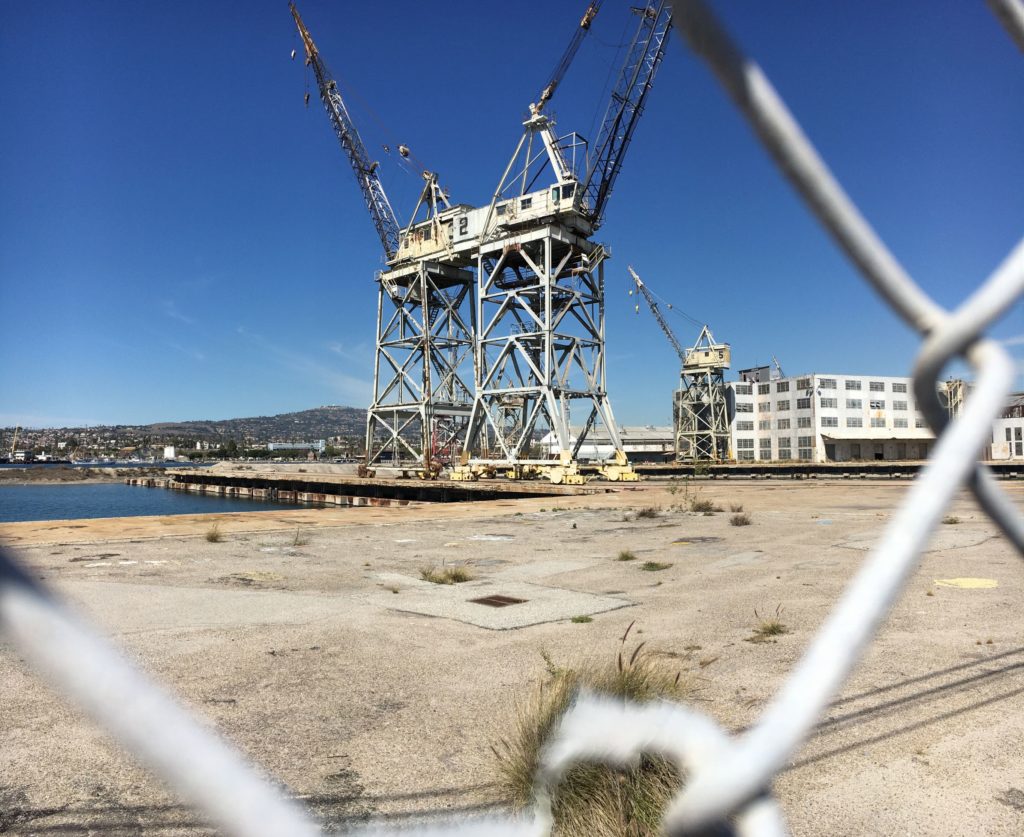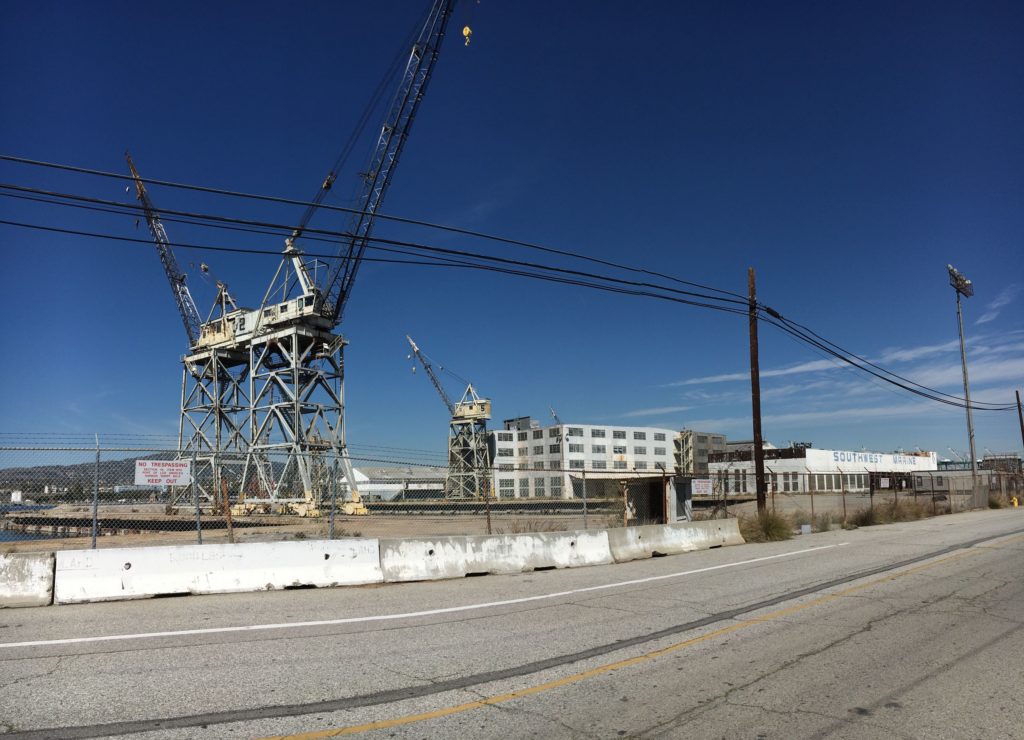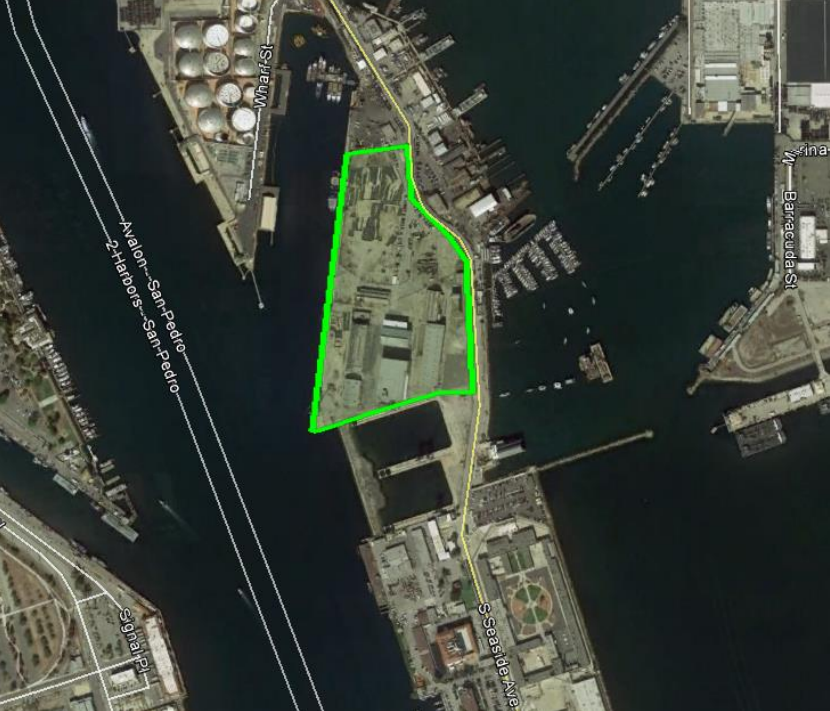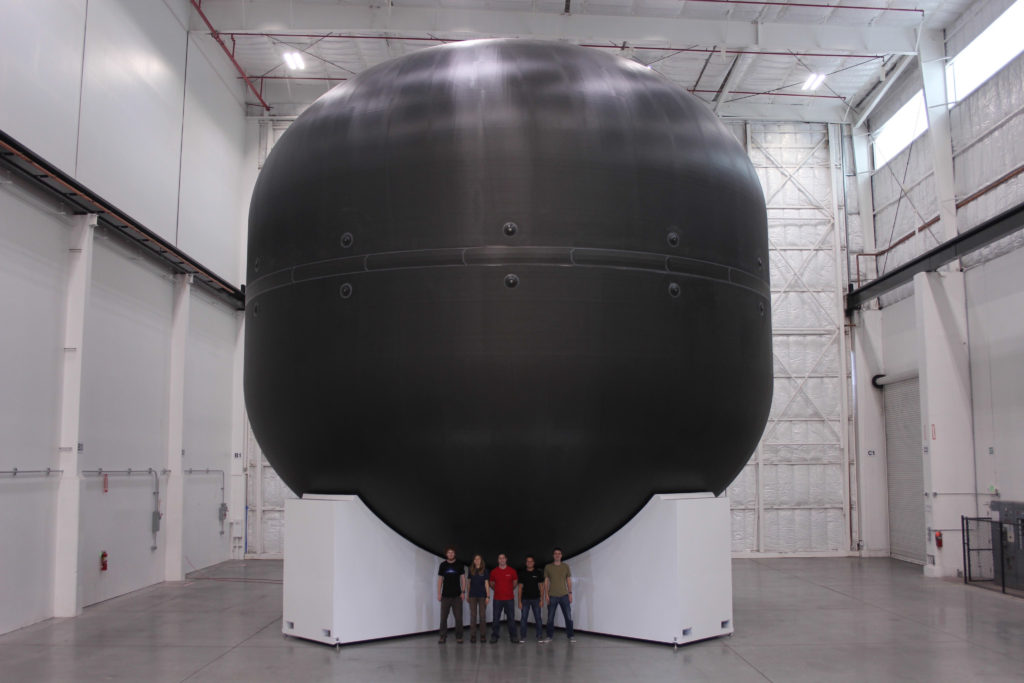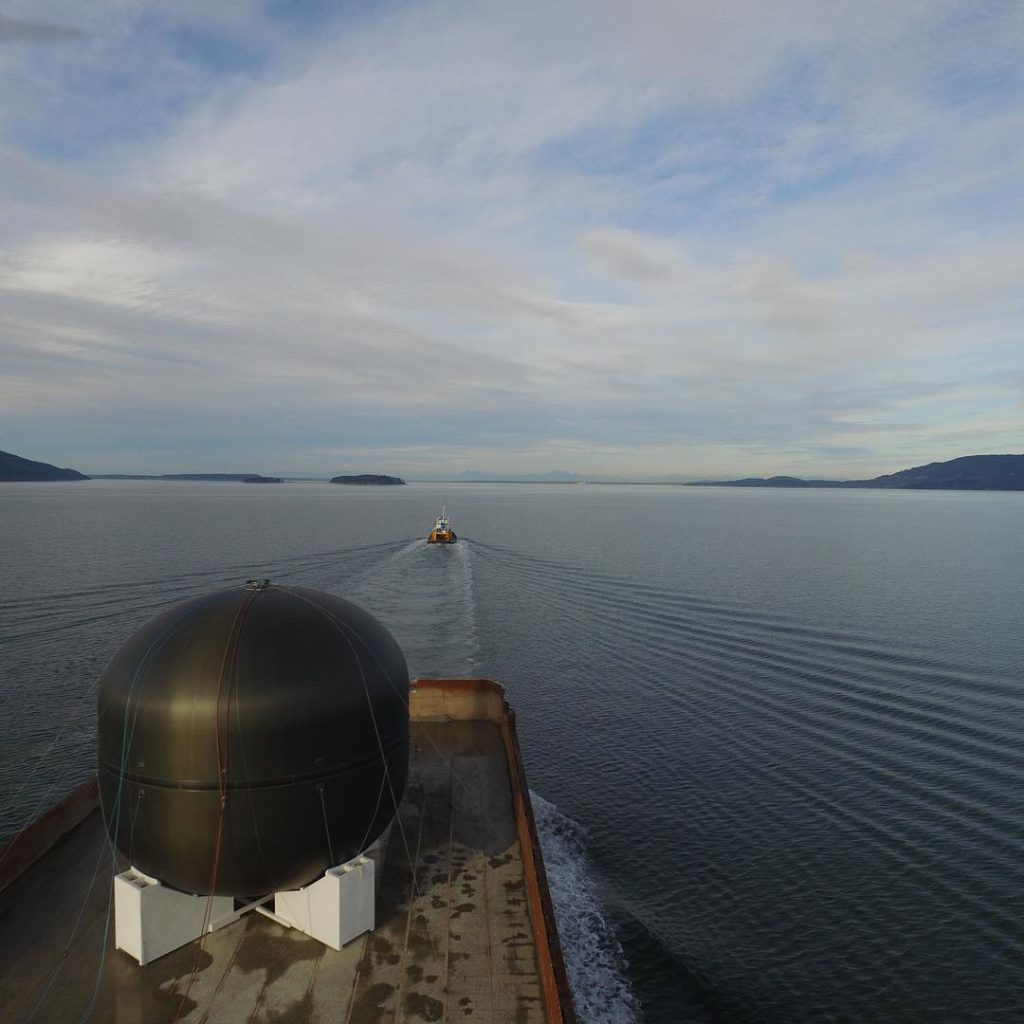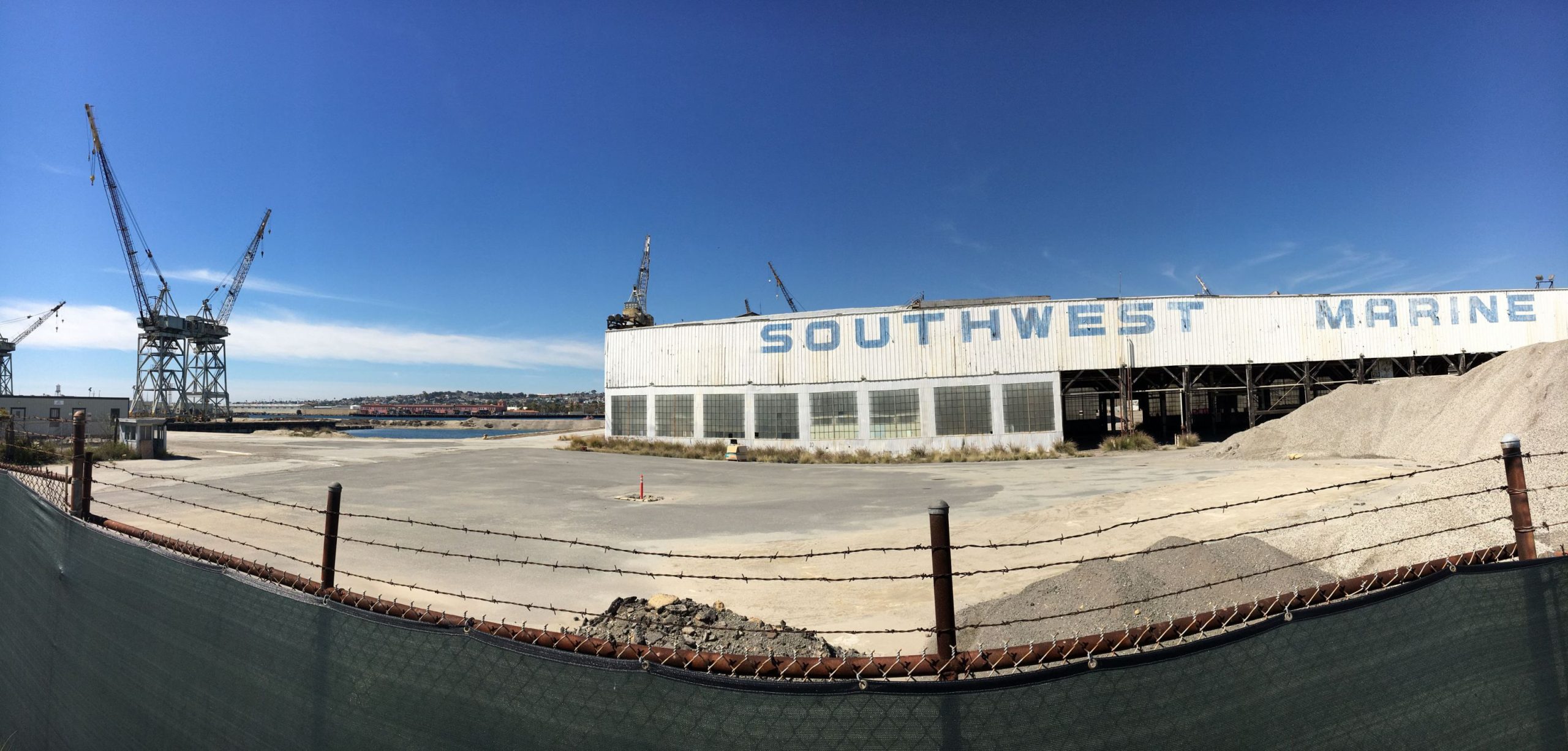
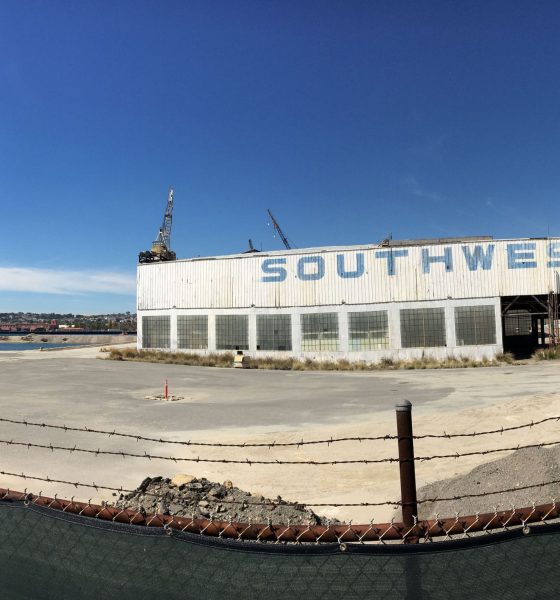
News
SpaceX’s first BFR manufacturing facility approved by the Port of LA
SpaceX has been given initial approval by the Port of Los Angeles to acquire and develop a massive vacant lot into a facility capable of manufacturing the first BFR prototypes and refurbishing the company’s reusable Falcon 9 boosters. This approval is without a doubt the biggest step forward yet for the company’s ultimate goal of sending massive spaceships to Mars.
A request summary completed on March 6 details SpaceX’s proposal, laying out a bright future of rocket manufacturing for the abandoned 18-acre lot at Berth 240, one that might soon support “composite curing, cleaning, painting, and assembly [of commercial transportation vessels]” that “would need to be transported by water due to their size.” This description meshes almost perfectly with past discussion of BFR manufacturing plans from SpaceX executives like Elon Musk and Gwynne Shotwell, both of which have in the recent past affirmed the need for any BFR manufacturing facility to be located adjacent to a large body of water due to the difficulty of transporting rocket hardware as large as BFR.
- Might those cranes be refurbished? (Pauline Acalin)
- Teslarati photographer Pauline Acalin took a trip down to the Port to take a look at the vacant lot. (Pauline Acalin)
- An outline of the Port of San Pedro lot SpaceX hopes to develop. (Port of LA)
On March 15, around a week after the environmental impact assessment gave a green light for SpaceX’s facility, Port of Los Angeles’ Board of Harbor Commissioners approved the proposal, effectively giving SpaceX permission to begin serious demolition and construction activities at Berth 240, an abandoned lot located on the San Pedro side of the greater Port of Los Angeles, which refers to both Ports of San Pedro and Long Beach. To provide context, SpaceX’s primary manufacturing facilities in Hawthorne, CA occupy 10-15 acres of urban real estate – in other words, even partial development of Berth 240’s 18 acres would mark a huge expansion of the company’s available manufacturing and refurbishment space, an absolute necessity for the construction of a launch vehicle as large as BFR.
The construction of such a facility would make it significantly easier for SpaceX to build its first BFR/BFS prototypes, avoiding the massive disruption and cost that transporting the 9m-diameter vehicle through downtown LA. Rather than dealing with that nightmare, SpaceX would instead be able to simply crane an assembled booster or spaceship onto a barge (perhaps a drone ship?) that would then ship the rocket hardware through the Panama Canal to the company’s facilities in Cape Canaveral, FL or Boca Chica, TX.
Caught a glimpse of SpaceX’s upcoming Mars facility. @teslarati #SpaceX #BFR pic.twitter.com/hNWzIL5jeH
— Pauline Acalin (@w00ki33) March 19, 2018
While it is likely to take a fair amount of time to prepare the lot for the construction of a facility capable of manufacturing advanced composite rocket components, the wording in the Port documentation also suggests that SpaceX means to transfer its Falcon 9 recovery work to the new berth as soon as it’s available. Indeed, the comparatively massive space would give SpaceX far more room for recovery operations with the drone ship Just Read The Instructions (JRTI), and could potentially become a one-stop-shop for booster recovery and refurbishment. As of now, boosters recovered on the West Coast are transported to the Hawthorne factory for all refurbishment work, operations that themselves already require brief road stoppages to accommodate the sheer size of Falcon 9. As of 2018, SpaceX is planning for BFR to be 50% taller and close to three times as wide as Falcon 9 (350 feet long and 30 feet in diameter).
Although SpaceX is specifically named in the study, the company appears to have created a distinct LLC to lease the lot, referred to as “WW Marine Composites” by the authors. At the point of publishing, WW Marine Composites does at least appear to exist, but that is the sum of all info available on the circa-2016 LLC. This obscure, stealthy LLC appears to continue SpaceX’s habit of purchasing and leasing land through shell corporations, a common behavior of businesses thanks to its tax benefits and protection against liability. Finally, an additional document from December 2017 hints that SpaceX is still working closely with Janicki Industries, a globally-renowned carbon composite structures manufacturer that SpaceX tasked with the creation of the first 12m-diameter composite tank, revealed to the surprise of almost everyone in 2016 and soon after tested to destruction in 2017.
- SpaceX’s carbon fiber Starship tank prototype, revealed during Elon Musk’s 2016 IAC presentation. (SpaceX)
- SpaceX’s massive carbon fiber liquid oxygen tank seen testing in Northern Washington. BFR’s tankage will be 25% narrower, and thus easier to manufacture. (SpaceX)
- BFR’s booster and spaceship, tiny human for scale. (SpaceX)
Regardless, it will be exciting to watch SpaceX develop what will likely become its newest property acquisition. BFR is a massive rocket and will require commensurately massive manufacturing hardware, hardware that is likely to be spotted by any number of eagle-eyed SpaceX fans and observers in the LA area. Berth 240 may also uniquely lend itself to some incredible photos of the company’s progress, thanks in part to the fact that it’s all but surrounded by shoreline that is accessible to the public. Teslarati photographer Pauline Acalin visited the site just after receiving insight on the latest development to get a feel for the location.

It’s liable (and perhaps probable) to change, but curious observer can currently walk up right beside Berth 240, a location that might soon support SpaceX’s first BFR manufacturing. (Pauline Acalin)
Follow us for live updates, behind-the-scenes sneak peeks, and a sea of beautiful photos from our East and West coast photographers.
Teslarati – Instagram – Twitter
Tom Cross – Twitter
Pauline Acalin – Twitter
Eric Ralph – Twitter

News
Tesla FSD fleet is nearing 7 billion total miles, including 2.5 billion city miles
As can be seen on Tesla’s official FSD webpage, vehicles equipped with the system have now navigated over 6.99 billion miles.

Tesla’s Full Self-Driving (Supervised) fleet is closing in on almost 7 billion total miles driven, as per data posted by the company on its official FSD webpage.
These figures hint at the massive scale of data fueling Tesla’s rapid FSD improvements, which have been quite notable as of late.
FSD mileage milestones
As can be seen on Tesla’s official FSD webpage, vehicles equipped with the system have now navigated over 6.99 billion miles. Tesla owner and avid FSD tester Whole Mars Catalog also shared a screenshot indicating that from the nearly 7 billion miles traveled by the FSD fleet, more than 2.5 billion miles were driven inside cities.
City miles are particularly valuable for complex urban scenarios like unprotected turns, pedestrian interactions, and traffic lights. This is also the difference-maker for FSD, as only complex solutions, such as Waymo’s self-driving taxis, operate similarly on inner-city streets. And even then, incidents such as the San Francisco blackouts have proven challenging for sensor-rich vehicles like Waymos.
Tesla’s data edge
Tesla has a number of advantages in the autonomous vehicle sector, one of which is the size of its fleet and the number of vehicles training FSD on real-world roads. Tesla’s nearly 7 billion FSD miles then allow the company to roll out updates that make its vehicles behave like they are being driven by experienced drivers, even if they are operating on their own.
So notable are Tesla’s improvements to FSD that NVIDIA Director of Robotics Jim Fan, after experiencing FSD v14, noted that the system is the first AI that passes what he described as a “Physical Turing Test.”
“Despite knowing exactly how robot learning works, I still find it magical watching the steering wheel turn by itself. First it feels surreal, next it becomes routine. Then, like the smartphone, taking it away actively hurts. This is how humanity gets rewired and glued to god-like technologies,” Fan wrote in a post on X.
News
Tesla starts showing how FSD will change lives in Europe
Local officials tested the system on narrow country roads and were impressed by FSD’s smooth, human-like driving, with some calling the service a game-changer for everyday life in areas that are far from urban centers.

Tesla has launched Europe’s first public shuttle service using Full Self-Driving (Supervised) in the rural Eifelkreis Bitburg-Prüm region of Germany, demonstrating how the technology can restore independence and mobility for people who struggle with limited transport options.
Local officials tested the system on narrow country roads and were impressed by FSD’s smooth, human-like driving, with some calling the service a game-changer for everyday life in areas that are far from urban centers.
Officials see real impact on rural residents
Arzfeld Mayor Johannes Kuhl and District Administrator Andreas Kruppert personally tested the Tesla shuttle service. This allowed them to see just how well FSD navigated winding lanes and rural roads confidently. Kruppert said, “Autonomous driving sounds like science fiction to many, but we simply see here that it works totally well in rural regions too.” Kuhl, for his part, also noted that FSD “feels like a very experienced driver.”
The pilot complements the area’s “Citizen Bus” program, which provides on-demand rides for elderly residents who can no longer drive themselves. Tesla Europe shared a video of a demonstration of the service, highlighting how FSD gives people their freedom back, even in places where public transport is not as prevalent.
What the Ministry for Economic Affairs and Transport says
Rhineland-Palatinate’s Minister Daniela Schmitt supported the project, praising the collaboration that made this “first of its kind in Europe” possible. As per the ministry, the rural rollout for the service shows FSD’s potential beyond major cities, and it delivers tangible benefits like grocery runs, doctor visits, and social connections for isolated residents.
“Reliable and flexible mobility is especially vital in rural areas. With the launch of a shuttle service using self-driving vehicles (FSD supervised) by Tesla in the Eifelkreis Bitburg-Prüm, an innovative pilot project is now getting underway that complements local community bus services. It is the first project of its kind in Europe.
“The result is a real gain for rural mobility: greater accessibility, more flexibility and tangible benefits for everyday life. A strong signal for innovation, cooperation and future-oriented mobility beyond urban centers,” the ministry wrote in a LinkedIn post.
News
Tesla China quietly posts Robotaxi-related job listing
Tesla China is currently seeking a Low Voltage Electrical Engineer to work on circuit board design for the company’s autonomous vehicles.

Tesla has posted a new job listing in Shanghai explicitly tied to its Robotaxi program, fueling speculation that the company is preparing to launch its dedicated autonomous ride-hailing service in China.
As noted in the listing, Tesla China is currently seeking a Low Voltage Electrical Engineer to work on circuit board design for the company’s autonomous vehicles.
Robotaxi-specific role
The listing, which was shared on social media platform X by industry watcher @tslaming, suggested that Tesla China is looking to fill the role urgently. The job listing itself specifically mentions that the person hired for the role will be working on the Low Voltage Hardware team, which would design the circuit boards that would serve as the nervous system of the Robotaxi.
Key tasks for the role, as indicated in the job listing, include collaboration with PCB layout, firmware, mechanical, program management, and validation teams, among other responsibilities. The role is based in Shanghai.
China Robotaxi launch
China represents a massive potential market for robotaxis, with its dense urban centers and supportive policies in select cities. Tesla has limited permission to roll out FSD in the country, though despite this, its vehicles have been hailed as among the best in the market when it comes to autonomous features. So far, at least, it appears that China supports Tesla’s FSD and Robotaxi rollout.
This was hinted at in November, when Tesla brought the Cybercab to the 8th China International Import Expo (CIIE) in Shanghai, marking the first time that the autonomous two-seater was brought to the Asia-Pacific region. The vehicle, despite not having a release date in China, received a significant amount of interest among the event’s attendees.
